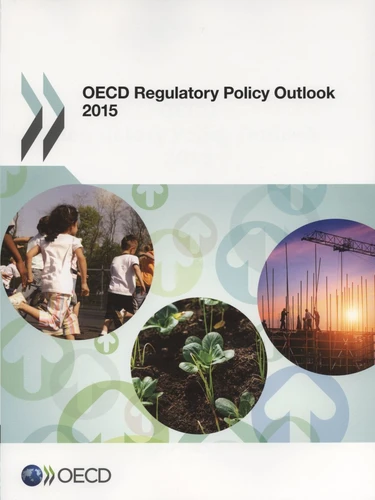OECD Regulatory Policy Outlook
Edition 2015
Par : Formats :
Définitivement indisponible
Cet article ne peut plus être commandé sur notre site (ouvrage épuisé ou plus commercialisé). Il se peut néanmoins que l'éditeur imprime une nouvelle édition de cet ouvrage à l'avenir. Nous vous invitons donc à revenir périodiquement sur notre site.
- Nombre de pages200
- PrésentationBroché
- Poids0.556 kg
- Dimensions21,3 cm × 28,1 cm × 1,1 cm
- ISBN978-92-64-23876-3
- EAN9789264238763
- Date de parution23/01/2016
- ÉditeurOCDE
Résumé
Regulations are the rules that govern the everyday life of businesses and citizens. They are an essential instrument in the hands of government to promote economic growth, social welfare and environmental protection. However, regulations can also be costly and ineffective in achieving their objectives. The Regulatory Policy Outlook is the first evidence-based analysis of the progress made by countries to improve the way they regulate.
Based on a unique survey filled by all OECD countries and the European Commission, the Outlook assesses progress in establishing the conditions for good regulation. It provides unique insights into the organisation and institutional settings in countries to design, enforce and revise regulations. It uncovers the areas of the regulatory cycle that receive too limited attention from policy makers, and identifies actors who have an important part to play to improve the way regulations are developed, implemented and evaluated.
It reviews the use of three critical tools of regulatory policy (Regulatory Impact Assessment, stakeholder engagement and ex postevaluation) and proposes options to use them in a more strategic manner to inform the development and delivery of regulations.
Based on a unique survey filled by all OECD countries and the European Commission, the Outlook assesses progress in establishing the conditions for good regulation. It provides unique insights into the organisation and institutional settings in countries to design, enforce and revise regulations. It uncovers the areas of the regulatory cycle that receive too limited attention from policy makers, and identifies actors who have an important part to play to improve the way regulations are developed, implemented and evaluated.
It reviews the use of three critical tools of regulatory policy (Regulatory Impact Assessment, stakeholder engagement and ex postevaluation) and proposes options to use them in a more strategic manner to inform the development and delivery of regulations.
Regulations are the rules that govern the everyday life of businesses and citizens. They are an essential instrument in the hands of government to promote economic growth, social welfare and environmental protection. However, regulations can also be costly and ineffective in achieving their objectives. The Regulatory Policy Outlook is the first evidence-based analysis of the progress made by countries to improve the way they regulate.
Based on a unique survey filled by all OECD countries and the European Commission, the Outlook assesses progress in establishing the conditions for good regulation. It provides unique insights into the organisation and institutional settings in countries to design, enforce and revise regulations. It uncovers the areas of the regulatory cycle that receive too limited attention from policy makers, and identifies actors who have an important part to play to improve the way regulations are developed, implemented and evaluated.
It reviews the use of three critical tools of regulatory policy (Regulatory Impact Assessment, stakeholder engagement and ex postevaluation) and proposes options to use them in a more strategic manner to inform the development and delivery of regulations.
Based on a unique survey filled by all OECD countries and the European Commission, the Outlook assesses progress in establishing the conditions for good regulation. It provides unique insights into the organisation and institutional settings in countries to design, enforce and revise regulations. It uncovers the areas of the regulatory cycle that receive too limited attention from policy makers, and identifies actors who have an important part to play to improve the way regulations are developed, implemented and evaluated.
It reviews the use of three critical tools of regulatory policy (Regulatory Impact Assessment, stakeholder engagement and ex postevaluation) and proposes options to use them in a more strategic manner to inform the development and delivery of regulations.





















